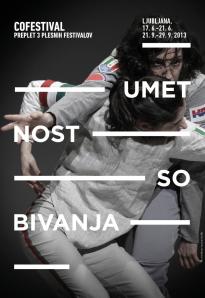Beyond our experience with respect to this European programme itself, which could be summed up by exclaiming “Fantastic! Encore! Encore!” in connection with the residencies, the welcome and meeting the different partners, here we would like to look at our experience from the standpoint of having had the chance to “get away from our own territory”.
Getting away from one’s “territory” does not only mean travelling.
In our case, leaving our territory entailed some big changes:
- In our creative habits, since our creation process usually unfolds in a single quintessentially French context – whereas with modul-dance the separation, the distance, allowed us to return home invigorated and lighter in weight.
- In our time-management habits: we usually stay longer in each place. In this project, however, between the discovery of the venues and of the working hours, which were always different, we had to constantly adapt ourselves.
That allowed us, from the beginning to the end of the creation of our piece, to remain in a state of continuous questioning, in a condition in which nothing was immovably established with urgency, thanks especially to the chance we had to present our work in distinct stages in three different places (Ljubljana, Barcelona and Dublin).
In some cases we felt we would have needed to stay longer on a residency, to anchor our work in a place and to feel secure before changing venues and questioning everything all over again. As things were, however, we went from a 15m x 20m stage under a glass roof to an 8m x 8m dance studio with mirrors and barres to a fully-equipped theatre stage and then back to a white studio… That affected the project’s aesthetic dimension and made its stabilization difficult.
A hybridization of aesthetics
In our discussions with the people in charge of the venues that welcomed us, we were also able to size up the aesthetics advocated by each one and, more broadly, we were able to take the measure of their territory.
The diverse expectations and the various ways of approaching the stage and of putting the body into play sketched, in a certain sense, a national choreographic outlook. This multiplicity helped us in some way to refocus ourselves on our work since it was impossible to meet all the demands posed by these many differences.
Consequently, our vision of our work became calmer.
In hindsight, it may be said that this phenomenon had a positive influence on our confidence in the project and in the method of dealing with it. We sought to make a statement on stage even if it differed from everything we had done before.
The economy
The economy of each country and each venue influences these sites’ relationship to the artist and has an effect on the artist’s way of creating. Indeed, the context affects the creation, scenography, number of performers and many other aspects. It is perhaps a gauge of the “national choreographic signature” that we all bear.
One can only pose the question, however, of whether this signature is actually something that is chosen by artists or whether it is above all imposed by the economy itself?
Even though we felt this financial pressure, we didn’t suffer from it very much since ours was a solo number and our scenography could fit in a suitcase. Nevertheless, if Spekies had needed a more elaborate scenography, more performers or more time to create the lighting, what would have become of it?
The making of acquaintances
By its very nature, this programme threw us directly into the “paws” of the directors of the venues concerned, with whom we couldn’t have imagined that we would be dealing since we are little accustomed to international commitments. This was an aspect that was absolutely wonderful (there is no other way to put it). One thing nagged us all the same: modul-dance comes to an end in 2014.
What will become of these opportunities to make new acquaintances without the European subsidies? Will we be falling back on the long lists of unanswered e-mails or will our future projects receive special attention? In other words, are these lasting relationships once outside the modul-dance framework?
Just as we said at the beginning, “getting away from one’s own territory” does not just mean packing one’s bags and departing. It’s true that we are nomadic by nature and that we enjoy meeting people. We couldn’t have been luckier: we found this dynamic, this movement to be exhilarating, like something indispensable to our way of creating.
It has reorganized and posed a new space of reflection for us. It has drawn us out of the “paralysis” that we may sometimes have felt. It has already projected us on what is to come... because we want to continue along these lines.
How can this be achieved? Everything remains to be invented.
Artistically speaking, we are at the end of a cycle and we can feel how another cycle is beginning.
This European experience allows us to ask ourselves the right questions about our artistic and structural future, including:
- Our relationship to the stage and to language.
- Our relationship to an economy that is steadily more insistently demanding “extra-light” forms. How can this constraint be linked to a performing dimension that will uphold each artist’s intimate personal universe?
- Our relationship to places: how can an increased mobility be combined with continued ties to the dance structures in our own territory?
Magali Milian and Romuald Luydlin – La Zampa – France

